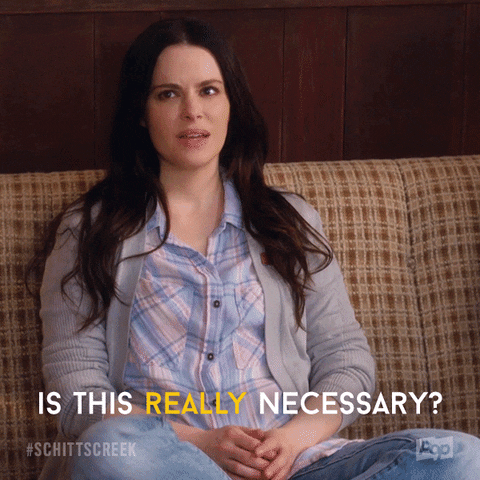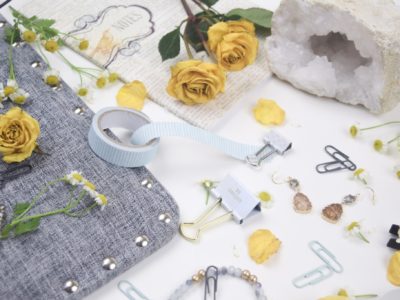It’s the partner we can never leave. It’s the toxic relationship we justify with pathetic excuses. Sale after sale and event after event, consumers set themselves on a hedonistic treadmill wherein every purchase leaves them with a harrowingly empty feeling, yet simultaneously encourages them to cruise through page after page, store after store, for more goodies. Besides the digits shopping takes off our bank account, what else is iffy about it?
Fast fashion refers to cheaply made, affordably priced, short-lived and designer-imitated apparel. Fashion trends often conform to a trickle-down policy. Designs from golden apples of the industry like Valentino and Alexander McQueen are first sold at premiums, replicated by TopShop and Zara a season or two afterward, before finally settling in the hands of cheap retailers like Shein and Boohoo. “Every year, fashion trends change and there is always something new to change,” said Waverly Kim, a second-year at the University of California, San Diego. With design, production and distribution processes streamlined, fast fashion enables retailers to introduce an array of clothing styles (Fashion Nova launches about 600 to 900 new styles every week) to its customers in very little time.
Now, the average Jane can catch up with the latest catwalk styles without breaking the bank.
Why the Heat Towards the Fashion Industry?

While fast fashion sounds just fine and dandy, closer inspection reveals a more textured image. “It is so tempting to cave into fast fashion! Especially when so many mainstream bands are fast fashion companies. Fast fashion not only supports exploitative and unethical labor practices, but perpetuates environmental degradation and racism,” said Jadyn Kim, a second-year at the University of California, San Diego. For decades, the global community, particularly environmentalist groups, have kept a critical and unrelenting gaze on the fashion industry for its degrading environmental practices and work conditions.
Notwithstanding emphatic criticisms, though, the fast fashion industry’s profits soar on the daily with its environmentally unsound practices. Fashion’s global production and supply chain pollute the Earth. The production of one cotton shirt uses roughly 2,700 gallons of water. That’s enough water for an average person to consume in two and a half years. What’s worse, workers dispose of water saturated with chemicals and finishing agents after textile dyeing into streams and rivers, which pollutes local waters. Wrapping up the manufacturing process, the fashion industry has released 1.2 billion tons of greenhouse gas every year— that’s more than the combined emissions for all international flights and shipping.
Making a pair of jeans alone produces as much greenhouse gas as driving over 80 miles. And if that’s not disturbing enough, try this on for size: one garbage truck of clothing and textiles ends up at landfills or burned every second, with merely 1 percent of clothing recycled into new clothing. The average American throws away 80 pounds of clothing every year. According to the Copenhagen Fashion Summit, fashion contributes 92 million tons of solid waste to landfills each year. Waste precipitated by high levels of production and consumption are expected to rival plastic waste in oceans. A hyper-consumerist culture belies a looming environmental issue, which is fortified by fast fashion, as a revolutionary clothing production operation.
We would love to believe workers produce clothing in spacious and well-ventilated workplaces where they are treated decently, paid a fair wage and have healthcare coverage. Unfortunately, reality paints a vastly different picture. Behind the scenes in the factories, workers suffer the brunt of debased labor conditions and paltry pay. What’s worse, environmental hazards spawned from fast fashion production disproportionately affects people of color and low-income communities.
Fast-fashion presents problem after problem. “Mining sites, factory farms, and hazardous waste facilities are more likely to be stationed near low-income communities and communities of color because they lack wealth and power to thwart companies from working near their homes… The intolerable odors, toxic facilities, and contamination of water lower the quality of life in the city and threatens the health of the community,” Kim said. What may appear as a fashion steal, robs workers in low-income countries of a sustainable living wage and safe working conditions. In the meantime, the desire to shop grows stronger as shopping adopts a quasi-addictive quality.
The Reality Check

The sustainability dilemma haunts every nook and cranny of the fashion industry. Is there truly sustainable fashion, and more importantly, affordable sustainable fashion? Maybe, but the prices will never dip as low as what we find in mainstream fast fashion stores. Will fast fashion companies do much to reform their practices despite their massive contribution to pollution and worker exploitation? Probably not. After all, their business model depends on it. Companies are increasingly adopting green buzzwords and sustainability pledges which, albeit well-meaning, does not tackle the root of the issue. Again, their business models hinge on rapid production. To create clothing more palatable to “green” consumers, many corporations have greenwashed their goods by spewing buzzwords and nebulous claims about sustainability.
H&M demonstrates a case in point. Taking advantage of the equivocal definition of “sustainability” and “green” to appease consumer qualms, H&M markets “conscious” products whose descriptions say nothing to differentiate itself from clothing outside of the sustainable clothing line. “A fast-fashion retailer aiming to be sustainable is a mixed bag. Their goal is always to sell a lot of clothes, but their reach to consumers is wide, meaning if they are trying to be sustainable and tell a sustainable story/educate the consumer, this is helpful. However, they need to do more,” said Dr. Leslie Simpson, assistant professor at the Fashion Design Program at Stevenson University. In reality, producing garments made from recycled materials does barely anything when you’re adamant about producing 600 million articles of clothing annually.
Boycotting fast fashion is intuitively appealing. Abstaining from shopping often springs from a genuine desire to limit worker exploitation and environmental degradation. We can oppose fast fashion by thrifting and purchasing sustainable, long-standing goods of higher quality in lieu of clothes full of unraveling seams and choppy zippers. As of late, it has become fashionable to proclaim your opposition to fast fashion.
Vilifying fast fashion has become a virtue-signaling badge for sanctimonious people to display on and offline. While fast fashion is deplorable, it’s essential to many people. Not everyone has the luxury of buying sustainably and ethically made items. For college students on a budget, we choose, usually out of necessity, clothing that makes the least dent on our wallets, not the environment.
When it comes down to choosing between a $100 zip-up hoodie from Patagonia or a $20 one from Forever 21, the answer is quite simple. “Some of the biggest challenges for sustainable fashion brands are price point, affordability for the consumer and accessibility. I think the best way to look at it is to buy less. Think about what is in your closet and wear it more. Consider why you buy what you buy and then do or don’t wear it. Then when looking for new items, look at the labels and shop for eco-friendly brands and think about investment pieces. By one sustainable fashion piece that you will wear a lot (and it will last longer), than 10 at H&M,” said Dr. Simpson. So, is giving into fast fashion inherently wretched? I don’t think so, but you’ll have to decide for yourself.




















